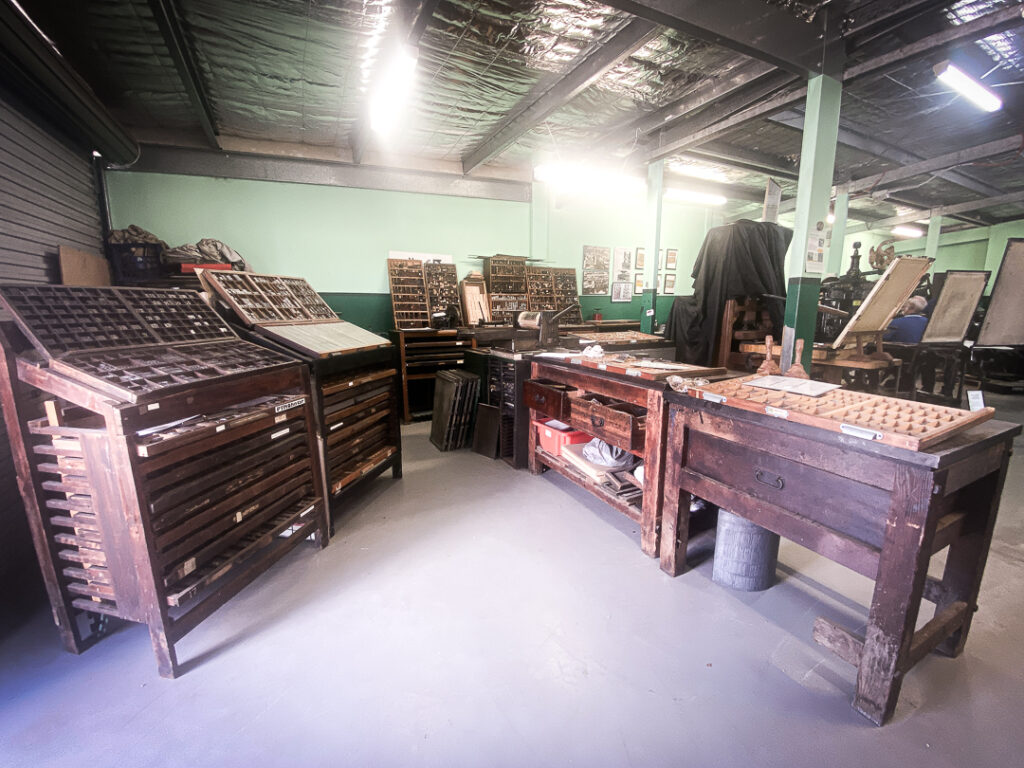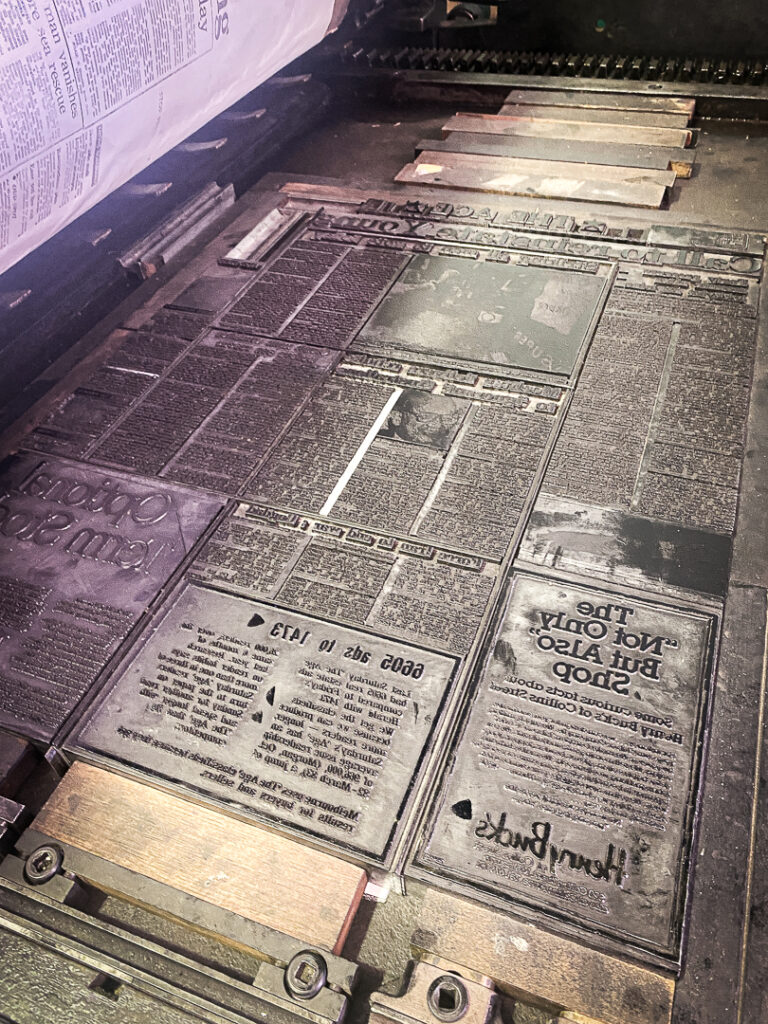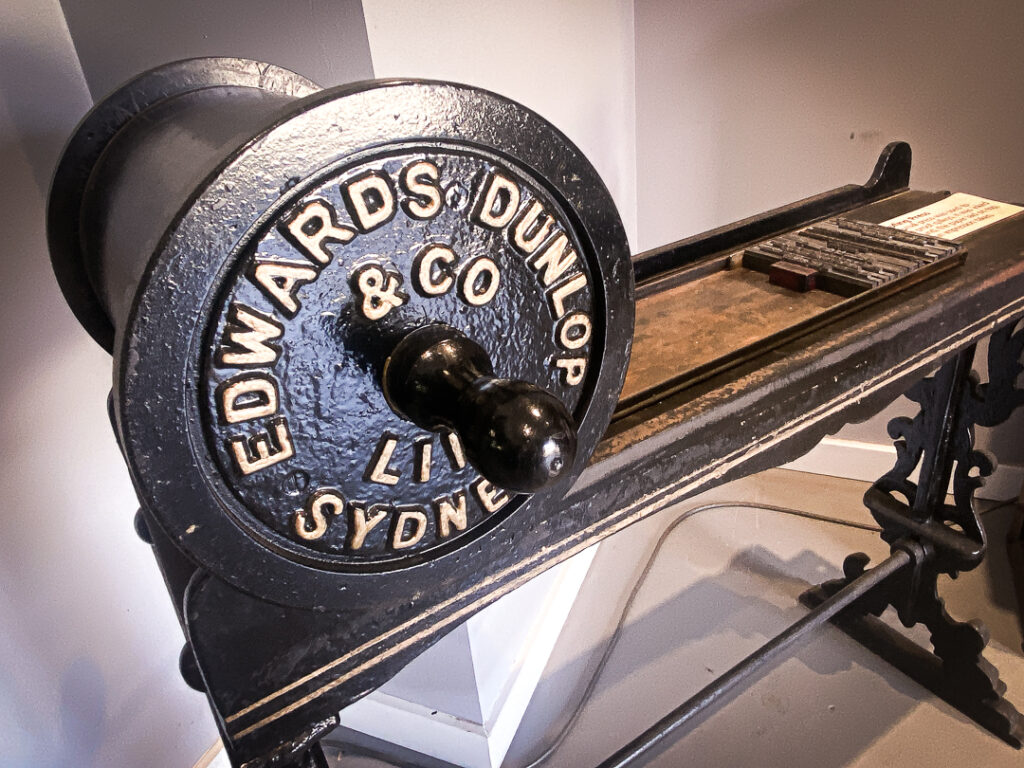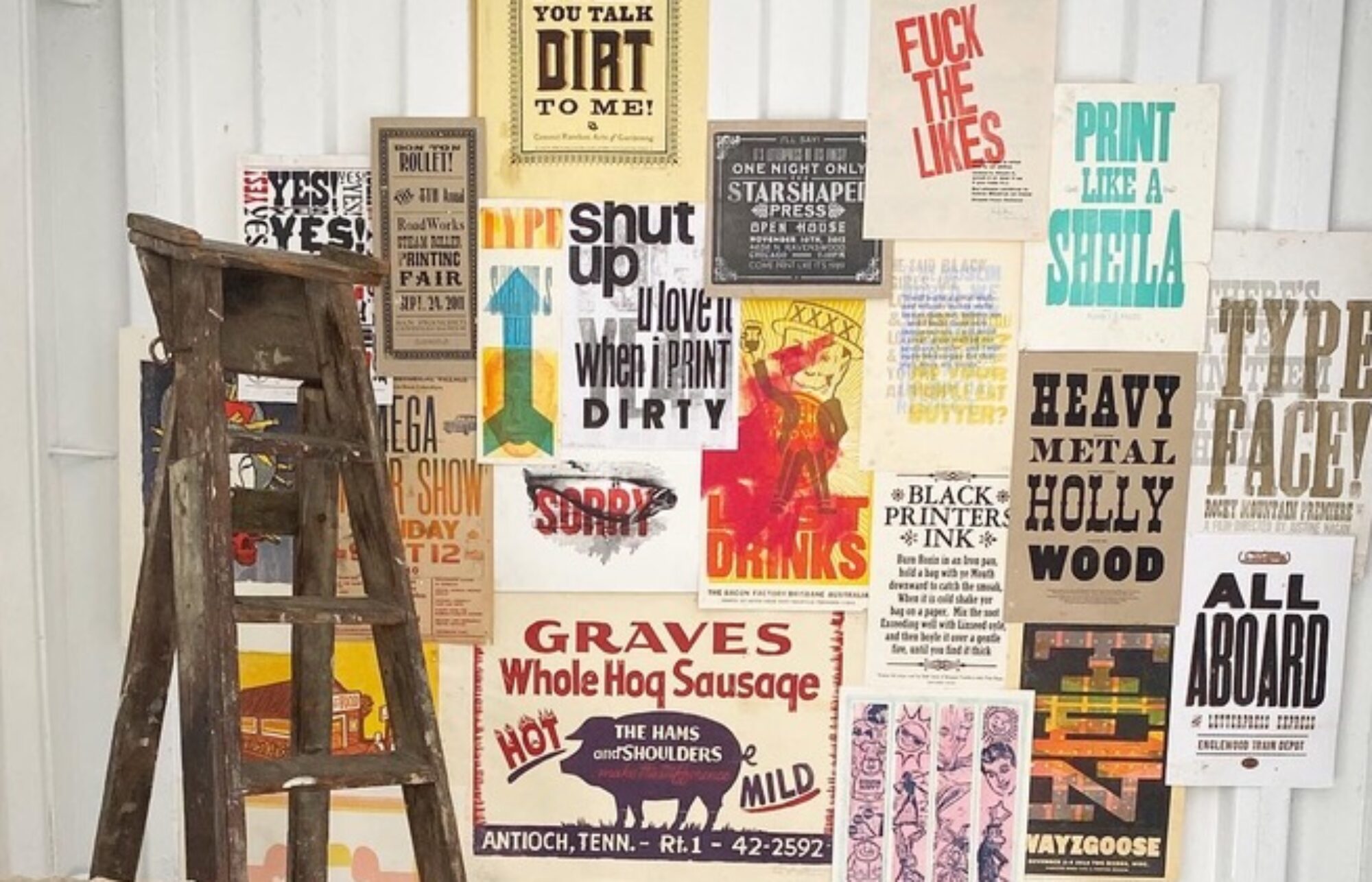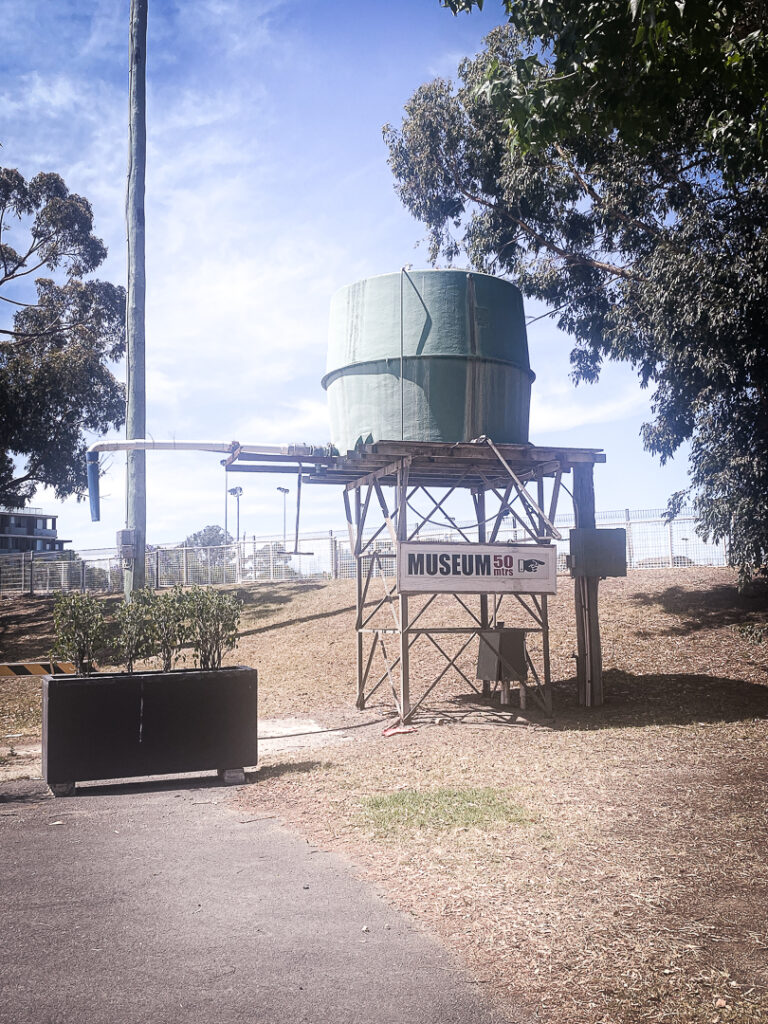
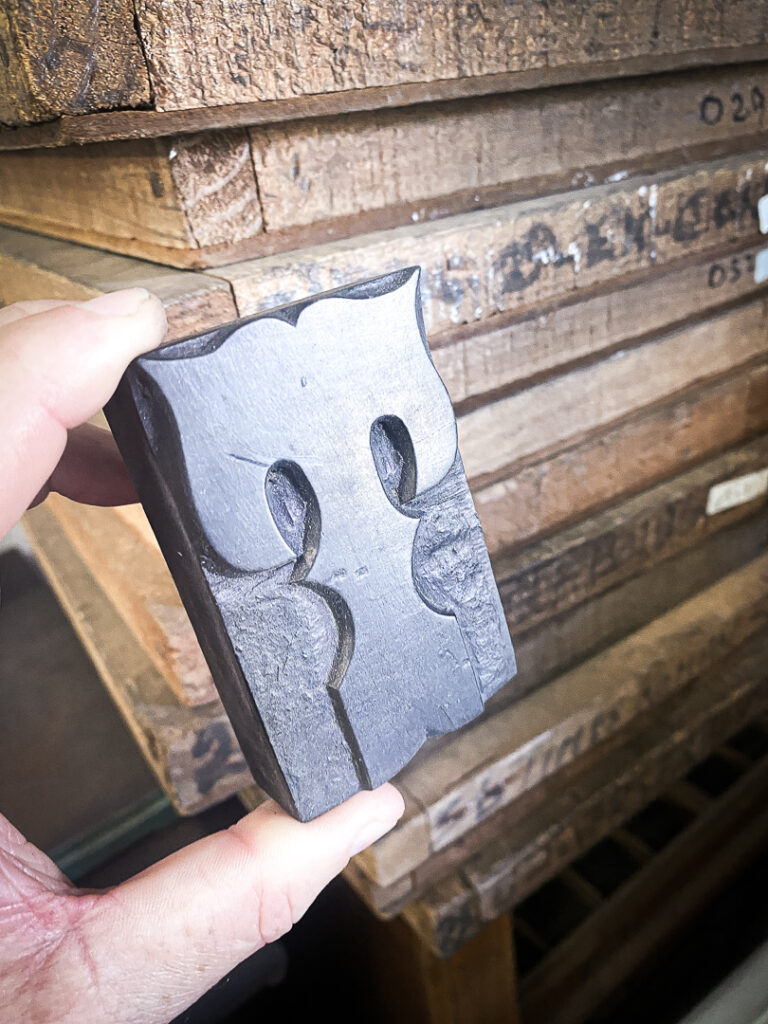
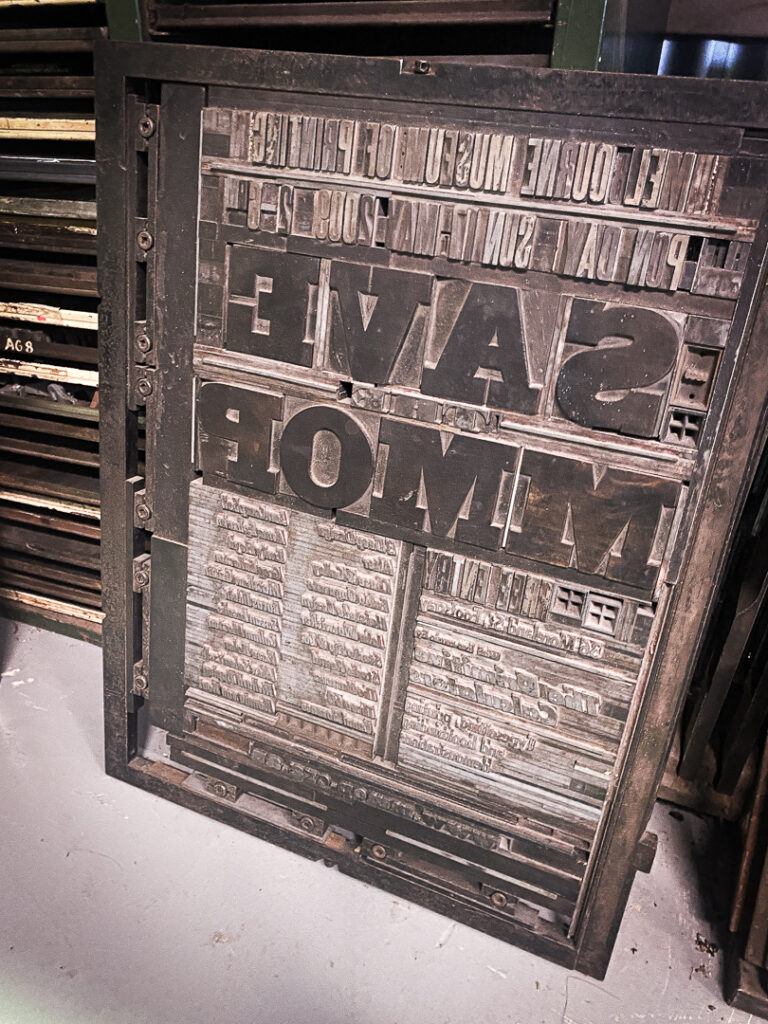
A visit to the Penrith Printing Museum has been way overdue.
A long time in the making:
For over 10 of years, I have meant to step foot into the Penrith Printing Museum, as Australia’s most established and supported collection of Australian print culture it has been remiss of me to have let it so long to travel the 1200km to pay tribute to the people the equipment and the deep-rooted passion that has gone into the establishment of this collection. With the close of 2023 upon us I finally got to tick this one off my bucket list.
As we walked into the Penrith Printing Museum, we could see the linotype machine being used, and in the back of the room, there was Ralph on the Columbian press setting a book that would be used to describe the museum’s collection. This unique little project was hand-set in readiness to be proofed on the Columbian. As I looked closer at Ralphs’s setup, I could see that they were not using a traditional tympan setup and that they had constructed a custom setup that held the sheets of the type by small springs. On discussion Ralph advised that they had been experimenting with this setup and process for over a year.
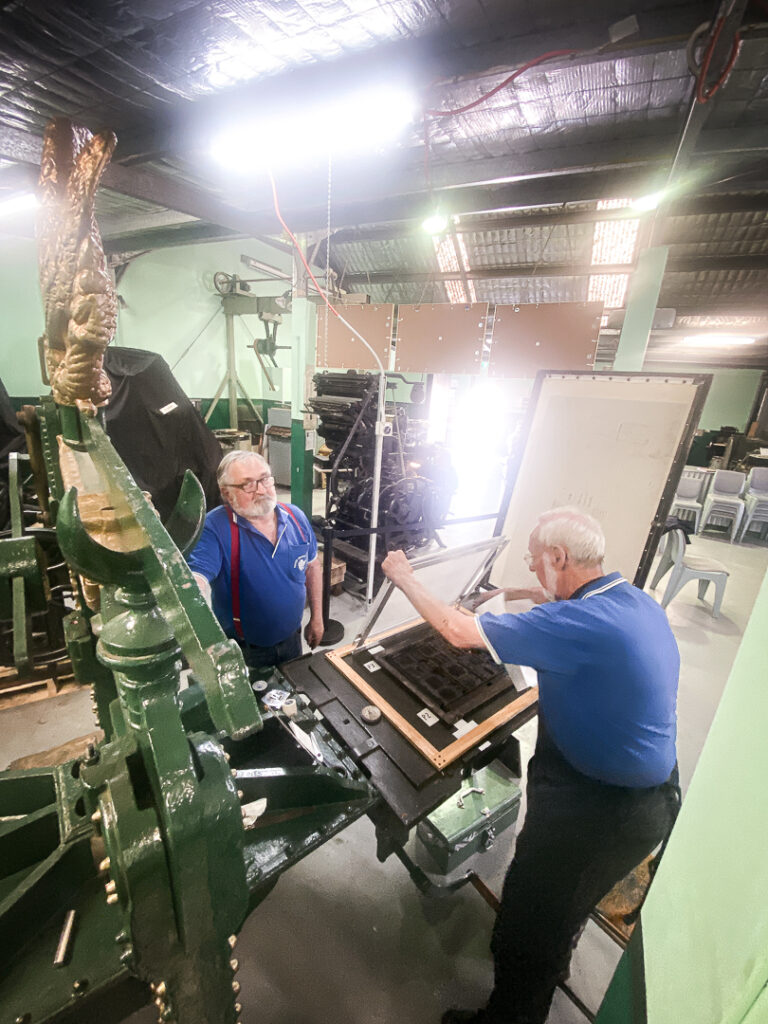
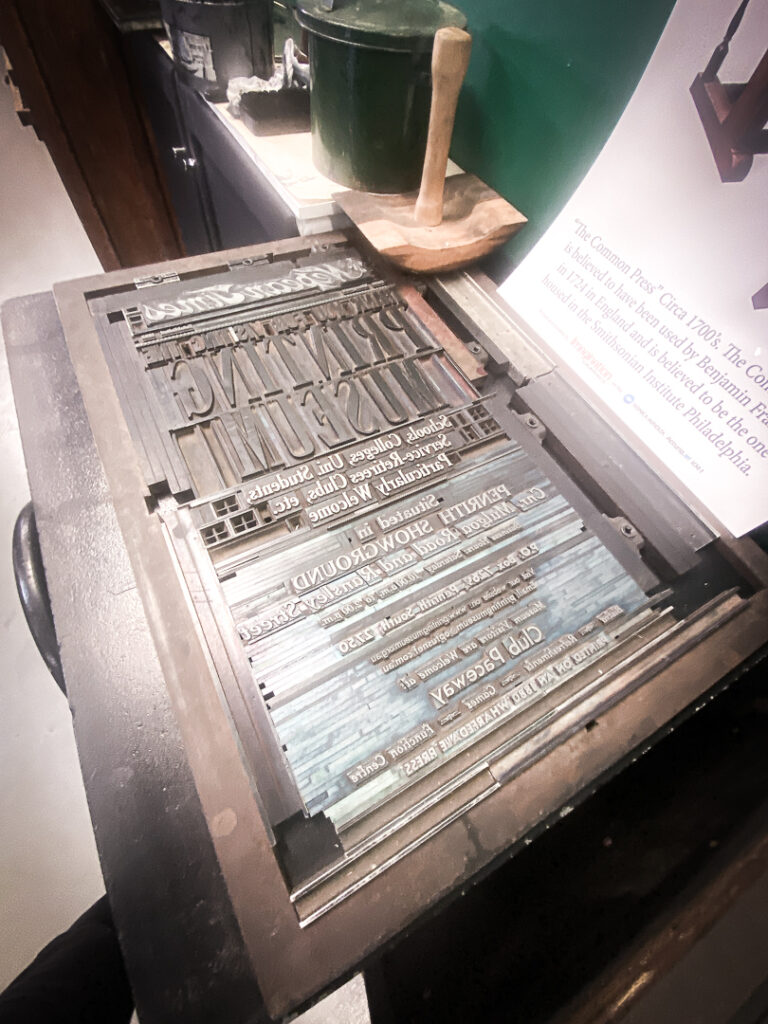
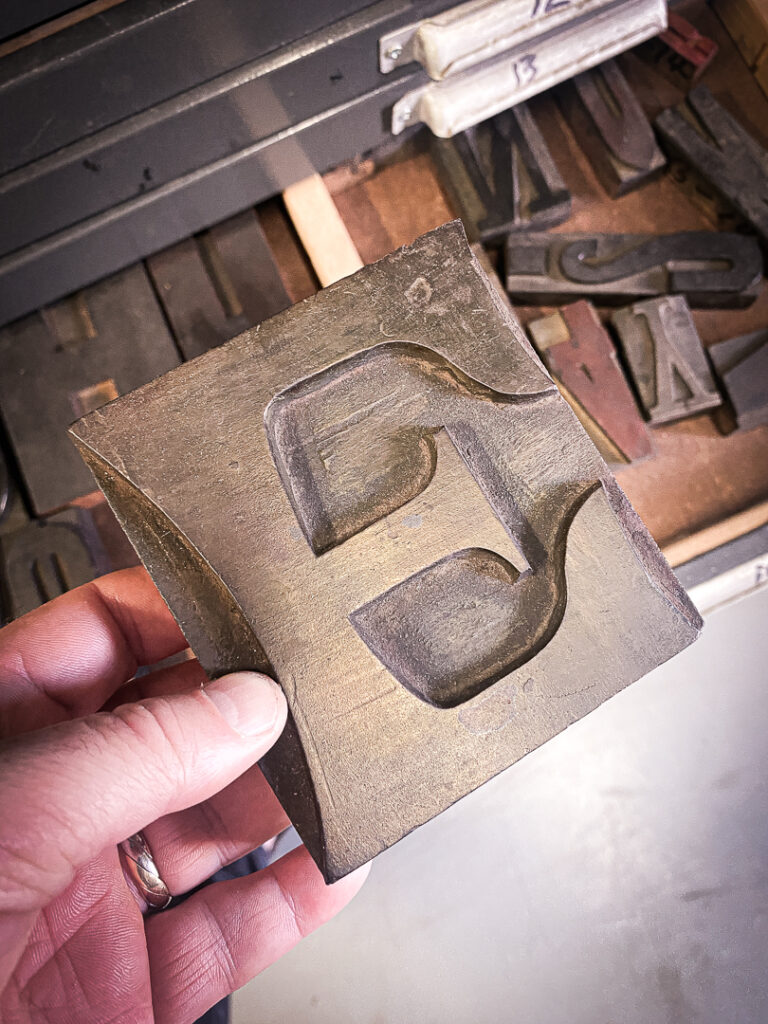
George was walking around the space offering guidance and help to both gentlemen in different ways. George saw out the final days of the trade as he transitioned into offset. Georges’s love for letterpress is truly evident as George lives in Lithgow and travels an hour and a half to get to the Penrith Printing Museum 3 days a week. Yet again, evidence that once the ink is in the blood, it is there for life.
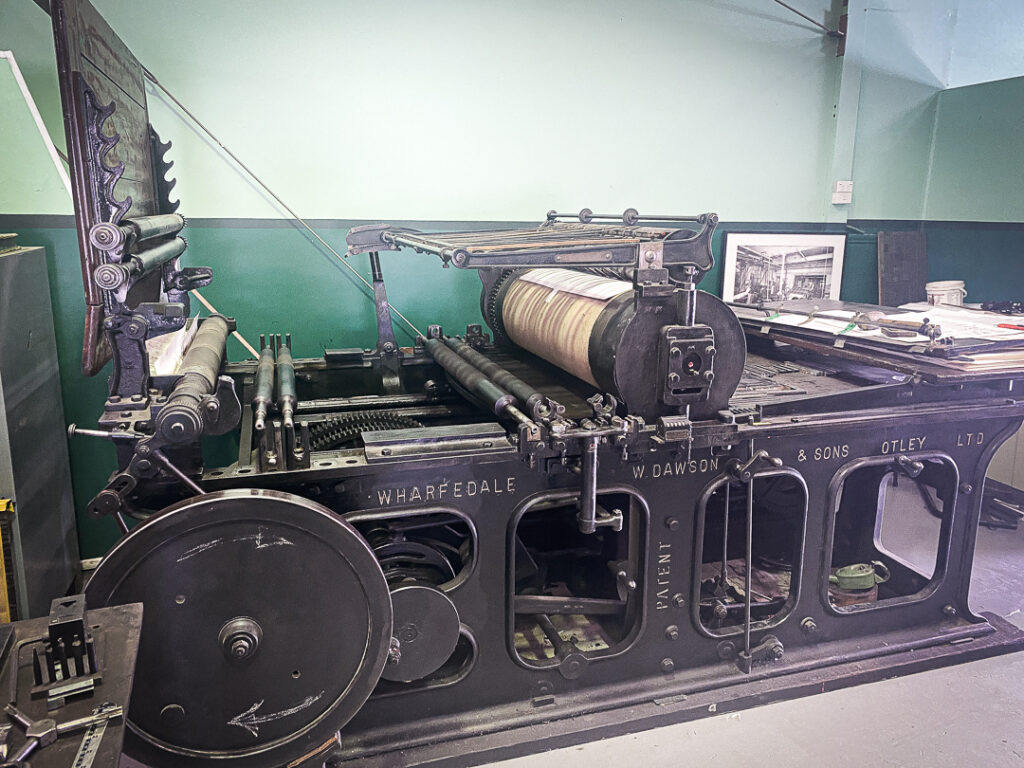
The Penrith Museum has the original Whardale cylinder press from the Nepean Times. This press is where it all started some 20 years ago when the museum was gifted the press, and the museum was slowly constructed around this beautiful old lady. George fired up the Wharfdale as if it was an inkjet printer, and calmy ran a few sheets just to impress us on how remarkable it is to have this piece of equipment in operational use.
The Wharfdale cylinder press holds a significant place in the history of printing technology, particularly in the context of small regional newspapers in Australia. Introduced in the mid-19th century, the Wharfdale press revolutionised the printing industry with its efficiency and reliability. Its cylindrical design allowed for continuous and faster printing, making it a workhorse for small newspapers that required consistent and cost-effective production. The Wharfdale was used at the Dorrigio Gazette before the introduction of the Heidelberg press that now resides as part of the collection at Penrith. The original press from the Dorrigo Gazette resides on display outside the local Dorrigo Museum in northern New South Wales.
Recently, the Penrith Museum achieved a remarkable feat, not only preserving a piece of Australian printing legacy but also transporting it back to the bustling city of Sydney.
The Don Dorrigo Gazette, a stalwart in the NSW mid-north coastal town of Dorrigo since the 1910s, sadly ceased operations after more than a century of service. The culprit being the inexorable march of the digital age and the rise of social media as the new form of reporting news, false news it may be.
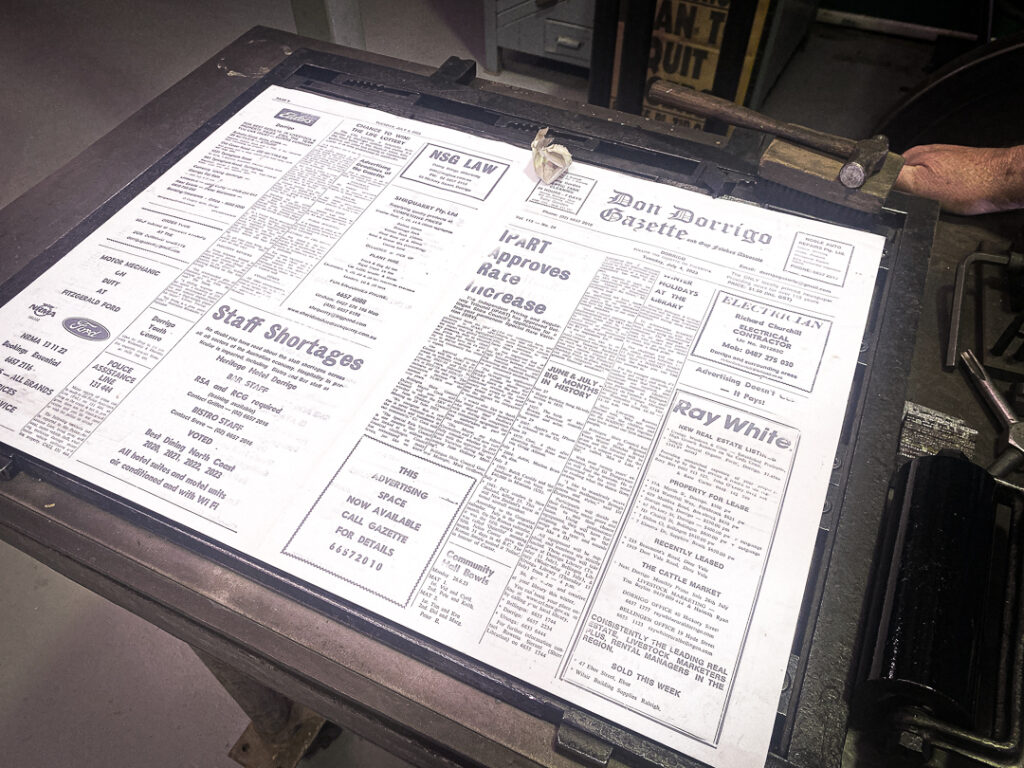
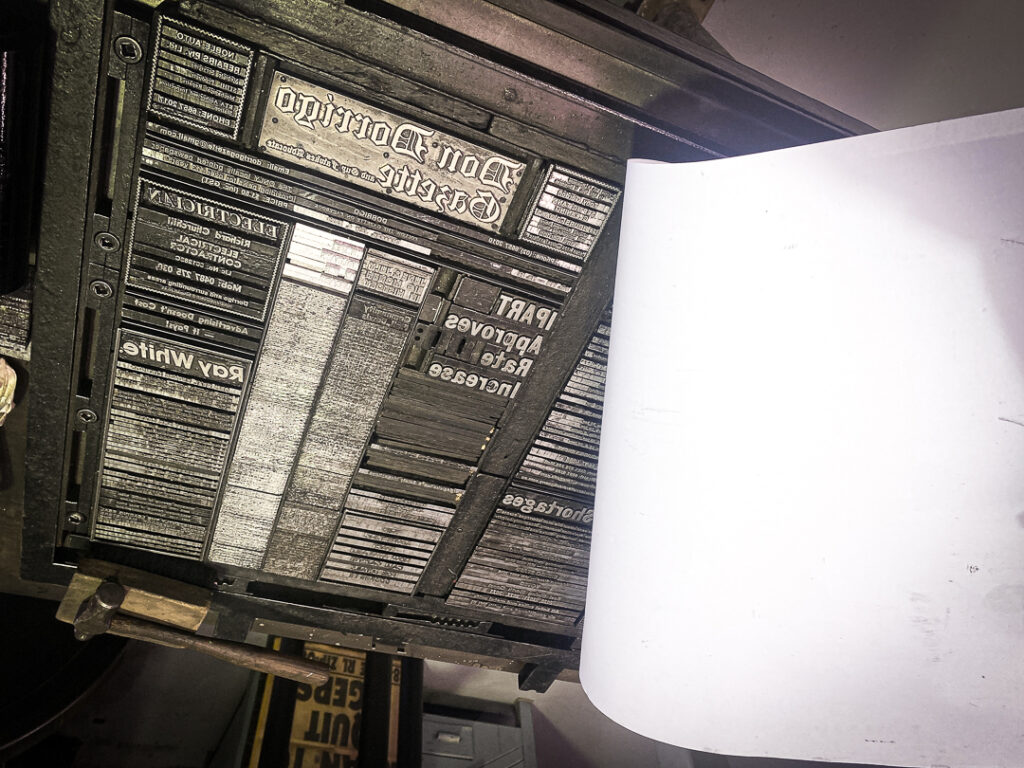
Yet, the story takes a hopeful turn, the Heidelberg cylinder press, which once breathed life into the Gazette’s pages, found a new home at the Penrith Printing Museum.
This wasn’t just a relocation; it was a mission fuelled by passion, dedication, and community support. The Penrith Printing Museum successfully raised the necessary funds to make this ambitious endeavour a reality. Through a crowdfunding campaign, enthusiasts, history lovers, and supporters from far and wide came together to contribute to the cause.
Andy McCourt, with the backing of Wide Format Online, played a pivotal role in spearheading the fundraising efforts. The goal was clear: secure $5,000 to cover the costs of decommissioning, freight, and relocation for the iconic 1939 Heidelberg cylinder letterpress machine. The response was overwhelming, highlighting the collective commitment to preserving Australia’s printing heritage
“These passionate volunteers, called upon the community to join hands in preserving this iconic piece of printing history, the community responded with enthusiasm, helping to exceed the fundraising goal,” McCourt shared.
The success of the campaign not only ensured the safe journey of the Heidelberg Press from Dorrigo to Penrith but also emphasised the importance of collective action in safeguarding cultural treasures. The press, with its storied history dating back to its arrival in Australia in 1954, now stands as a symbol of resilience and continuity.
As the Heidelberg Press settles into its new home at the Penrith Printing Museum, the victory is shared by all who contributed. The museum continues its tradition of not only showcasing historical artifacts but actively participating in their preservation.
The journey from the quiet town of Dorrigo to the bustling city of Sydney is more than just a physical relocation—it’s a triumph of community spirit, a celebration of history, and a testament to the enduring legacy of print. Visit the Penrith Printing Museum to witness this piece of living history and join in the celebration of a successful campaign that brought the Heidelberg Press back to Sydney, where it rightfully belongs.
The Penrith Printing Museum is a living Australian cultural icon in the form of Australian print culture, I could write a thesis about the collection and the wonderful work that is taking place inside the walls of this humble building.
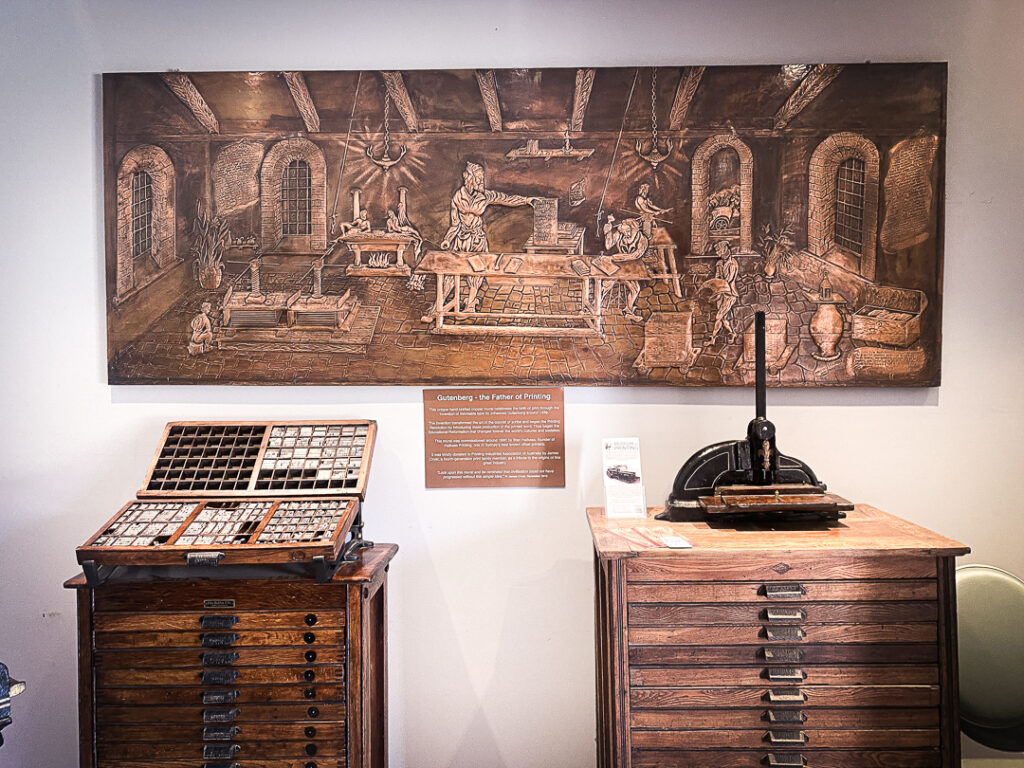
However, there is a darker side to our visit, yet again the nature of the volunteers all being in their later years does mean that this knowledge and energy directed towards the preservation of letterpress is threatened, as the years roll on, we will surely lack the skills experience and knowledge of these fine tradespersons. Further thought on how the small network of local historical villages and regional print museums can come together to share resources and support as we progress into the years ahead. With no national print museum to fly the flag, it has been the strength and the fight of these volunteers across the country that keep the light shining on the print culture that Has made this country what it Is.
